#enlarge photography
Explore tagged Tumblr posts
Text







Ritu Kumar's home in Goa is designed around a 400-year-old Banyan tree
When he found a property on a hill, at the end of a cul-de-sac, tucked away inside a forest in the heart of Anjuna, Ashvin Kumar knew it had his name on it—or at least, would soon enough. "The land itself was most unusual. It sloped away into a little valley and had unobstructed views all around," recalls the Oscar-nominated filmmaker and son of veteran designer Ritu Kumar. But for Ashvin, the crowning glory was the 400-year-old banyan tree that presided the land. “It diffused the harsh midday sun yet welcomed the soft twilight. I was immediately drawn to it.” And so, it was decided, the site would be cultivated and a home would be built for the family. After all, with its bright and breezy spirit and its abundance of coconut groves, the location was the perfect antidote to the urban sprawl.
#Vaishnavi Nayel Talawadekar#Prateeksha K. Tholia#enlarge photography#Ritu Kumar#architecture#india#goa#banyan#Anjuna#Ashvin Kumar#interior
9 notes
·
View notes
Text

this moth is trying to be a weevil
Crambus sp., Pennsylvania, US
#the snoot is actually enlarged palps#which are part of the mouth#snout moth#weevil#crambus#crambidae#moth#lepidoptera#imago#nature#bugs#nature photography#bugblr#animals#biodiversity#inaturalist#entomology#arthropods#insect appreciation#creature#snoot#sneef snorf#pennsylvania#wildlife#wildlife photography#macro#wild animals#invertebrates#cute#nature appreciation
29 notes
·
View notes
Text

Fabio Buchner in “I Will Never Leave” by Anastasia & Sasha Laukart for Badlon Magazine, May 2024
20 notes
·
View notes
Text
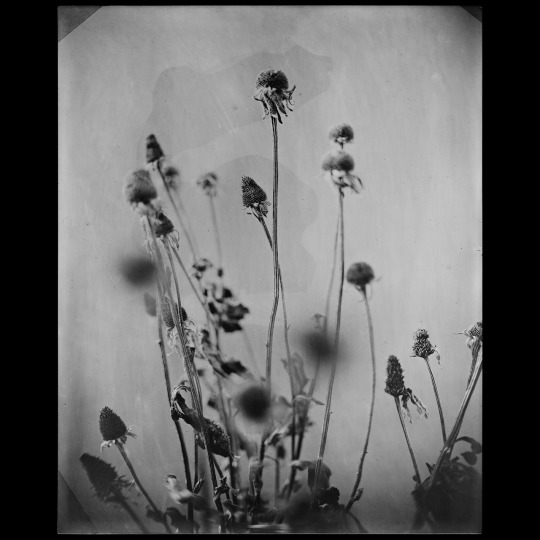
Biological Remnants (Gloriosa Daises) - analog photograph - paper negative, 60- second exposure +/-, hand-built cardboard box camera, wollensak 127mm enlarger lens, caffenol developer - robert matejcek - 2025
“To say goodbye is to die a little.” - Raymond Chandler - The Long Goodbye
tags
#robert matejcek#photography#film photography#analog#paper negative#ilford#large format#caffenol#enlarger lens#wollensak#handmade camera#cardboard box camera#alternative photography#alternative photographic processes#experimental#art#my art#still life#plants#daisies#botanicals#dried flowers#dark academia#dark aesthetic#grunge aesthetic#photographers on tumblr#artists on tumblr
22 notes
·
View notes
Text
the thing about this post is that, in my experience, people don't complain about so-called smith college problems (which was always itself an awfully snide coinage) because they don't understand that they're localized problems; they complain about smith college problems because said problems are cropping up like caltrops in a subcultural space to which they belong, and rendering it hostile to them.
and obviously one can come up with examples of this dynamic it's very easy to portray as ridiculous and entitled, like the first two in this reblog: 'support women who shave their legs and wear makeup every day' and 'let's hear it for masculine men.' absurd! but the thing is, it's also very easy to imagine the sort of subcultural toxicity that would produce complaints like that: criticism of compulsory femininity, while hella justified, can very easily tip over into an anti-femininity that's liable to leave a lot of femmes feeling as though they're being sneered at, because, well, they are! similarly, a lot of this website is sufficiently misandrist¹ that it leaves very little room for eg trans men looking to lean into a masculinity that broader society tried to deny them. and then there's this reblog of the smith college problems post, that rolls its eyes at bisexuals who object to other-gender attraction being framed as necessarily straight, and the first reply to the more recent post, that says snidely 'normalize not transitioning,' as if there weren't plenty of queer spaces in which sneering at 'bihets' and 'theyfabs' is a nastily common pastime.
i don't, personally, think it's an accident that all these examples affect groups who exist in a liminal space between hegemonic acceptance and outgroup acceptance, and in practice end up feeling alienated by both types of space. and personally, i think we can and should do better; i think we have to disarm broader societal inequality by working towards actual equality, for everyone, and firmly refusing to indulge this persistent, pernicious urge to revenge that wants, so very badly, to just tilt the social seesaw in the opposite direction…
⸻ ¹ no, misandry does not per se count as oppression. it does, however, combine with other axes of oppression like Blackness, transness, queerness, &c, in complex ways. it's also just tar pit behavior, imo, when indulged in with any serious frequency.
#obviously this latest 'normalize reverse prejudice' take also incidentally raises 'normalization' discourse#which like. for the record i think we should basically always replace 'normalize' with 'destigmatize'#the goal is to increase acceptance of variance‚ not simply to enlarge the ingroup while remaining just as hostile to the remaining outgroup#but that's largely tangential to the broader point#anyway. very arguably a mistake to effortpost on a sunday night with a mushbrain#definitely ran out of steam at the end and was like. what's a concluding sentence.#but like. if you don't say things when they occur to you you'll never say anything at all#and then your blog will just be. bird photography#and no one will know what you think about anything. for better OR for worse.
9 notes
·
View notes
Text

More tests with X-ray positives. This one didn’t go too well, but I don’t dislike it.
#photographers on tumblr#35mm#lensblr#photography#original art#contax#nature#birds#birblr#black and white#35mm black and white#enlarger#enlarging#darkroom photography#darkroom#printing#handmade print#photo prints#x ray#little birds#small friend#hummingbirds#hummingbird
9 notes
·
View notes
Text
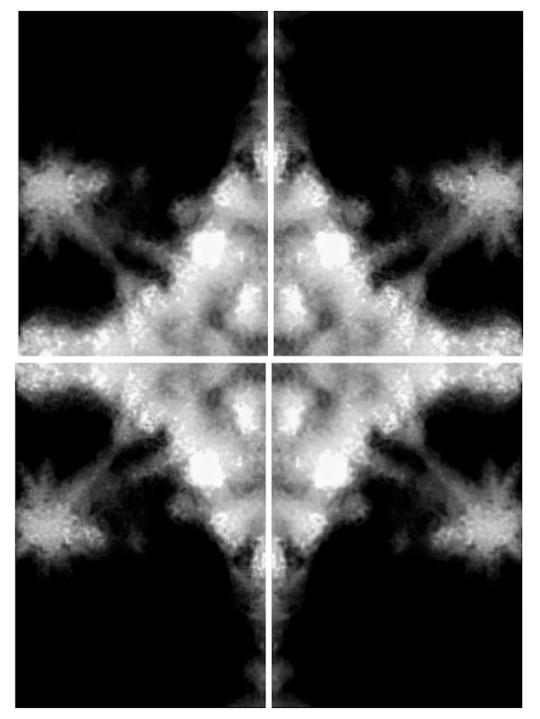
Emergence Ph. Lunaladee
#lunaladee photos#abstract#emerged from a spec enlarged#original photography#photographers on tumblr
25 notes
·
View notes
Text

Thoughtform #3
enlarged photogram made with India ink and saltwater
3 notes
·
View notes
Text

Darkroom Enlargement
3 notes
·
View notes
Text




some film photographs ive enlarged a while back. i don't know why they have yellow splotches, i might've left them in the fixer for too short of a time. still really love how they turned out though!
#i need to photograph more#all except the one of me and my dog were already b&w originally#but the enlarger i have is very old (used to be my grandmas) and can only print b&w#but luckily you can still use color film!#photography#analog photography#art#my art
6 notes
·
View notes
Text

Stepan Pomerantsev in "Boyhood" by Anastasia & Sasha Laukart st. Viktoriya Koroleva, hair Anastasia Vavina, for Sicky Mag., May 2021
8 notes
·
View notes
Text
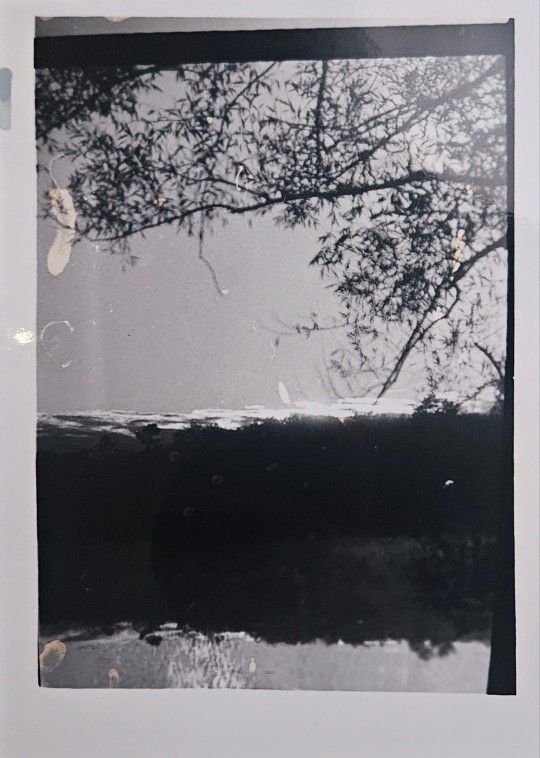

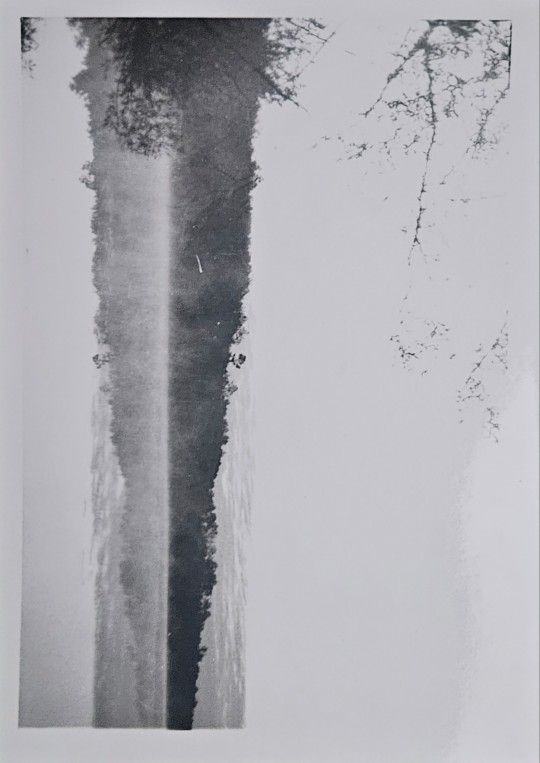
Northern Minnesota
#darkroom photography#film photography#lake#fire#the corner of the photos got fucked up a lil bit bc the enlarger had some gunk in it that blocked the light there#Minolta X-E7#400 iso#no idea what apeture#probably f/1.4
2 notes
·
View notes
Text

Untitled Large Format Still Life with Statue and Candle - analog photograph - paper negative, 8 second exposure +/-, hand-built cardboard box camera, wollensak 127mm enlarger lens, caffenol developer - robert matejcek - 2025
"Darkness cannot drive out darkness; only light can do that. Hate cannot drive out hate; only love can do that." - Martin Luther King, Jr.
tags:
#robert matejcek#photography#large format#film photography#analog#paper negative#caffenol#enlarger lens#wollensak#handmade camera#cardboard box camera#alternative photography#alternative photographic processes#experimental#art#still life#my art#photographers on tumblr#artists on tumblr#statue#candle
7 notes
·
View notes
Text
This is a great breakdown of phone cameras and worth a read if you do most of your photography with a phone.
Phone cameras are comparable to or better than many point-and-shoot digital cameras (especially older generation cameras, and this has been the case for several years now). But there is no such thing as a "pro" phone camera, just like there's no such thing as a "pro" point-and-shoot.
You can get really great photos and they can absolutely serve your needs. It's a fantastic solution if you're not in a position to carry extra gear with you.
But they are not "pro".
They can also be a perfectly acceptable tool for photography as an art form. You use the tools and explore and maximise their capabilities as you feel driven to. You certainly limit yourself in major ways with a camera phone, but that's part of the art. ALL photography is bound by the limits of your tool, and the entire point is to work within those and push your craft to see what you can do. So you can use the camera phone AS a pro (i.e. someone who understands the tool and principles of photography), but you have to understand the tool for that.
If you want a pro camera though, get a real camera.
Also, you need to identify the type of photography you like or want to do in order to choose the right camera.
I do a LOT of handheld, low-light photography w/o flash (museums, early or late hiking, etc.) so the sacrifice of low light quality in these cameras is the wrong decision, to me. But I also have a real camera which specifically caters to what I do. You just need to choose the tool or work within the bounds of what you have.
Smartphone cameras are NOT getting worse. (See below for phone photography tips)
I've now seen 3 pro photographers reviewing the iPhone 16 and complaining the cameras are "worse" and blaming Apple for not including revolutionary new camera technology.
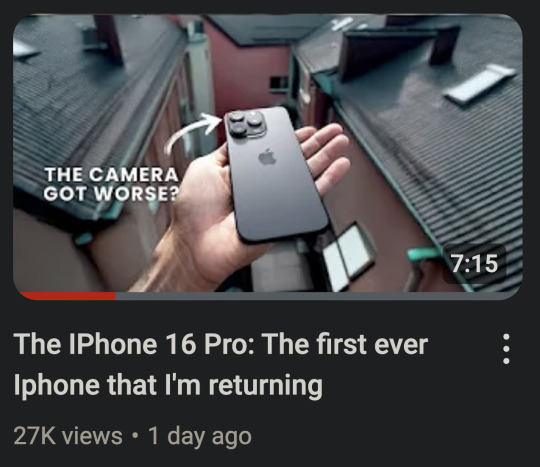

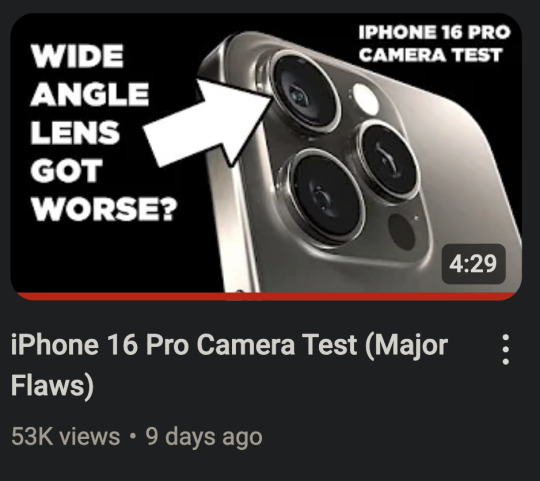
And I suppose this is partly Apple's fault. Their marketing and hype machine always goes overboard. But also, that's just how marketing works. Samsung has a "200 megapixel" sensor and Sony has a "Zeiss" lens. And I think it is unrealistic to expect smartphone companies to say "This product has entered the iterative phase and each new model will only be marginally improved over the last one."
Smartphones (from any brand) have become an appliance. You don't buy a new model of microwave every year. And you don't expect every new model of microwave to have new revolutionary technology. And that is pretty much the expectation you should have with most computer hardware from here on out.
And in some ways, that is a good thing. That means the design of the phone has pretty much been perfected and it will last you a long time if you take care of it. You will not be left behind and your phone will be able to handle any new software for most of its lifespan.
So, is Apple getting lazy or is there a reason their hardware is stagnating?
It seems that neither money nor marketing can change the laws of physics.
They cannot make transistors much smaller. Phones and computers are about as fast as current hardware designs can make them (unless there is a shocking scientific breakthrough). From here on out, heavy compute tasks that are beyond your phone or computer will be done in the cloud on giant computer clusters. Thankfully computers and phones seem to be plenty fast for the majority of tasks we ask of them.
I remember Katrina telling me her new computer didn't seem any faster. And I explained the computing tasks she does regularly were not really affected by the increased power and speed of her new computer. If something took 0.1 seconds before and now it takes 0.05 seconds, that is twice as fast. An increase in speed that looks fantastic in advertisements. But it is hard for our brains to perceive. She just didn't do anything on her computer that took it long enough for her to notice. But having a faster and more powerful computer/phone will increase its lifespan and resale value, so it is still prudent to get the best things you can afford at time of purchase.
And I'm afraid smartphone cameras are hitting their own hardware limitations. They can't make the sensors much larger to get better depth of field and low light performance. And cramming in more megapixels doesn't actually add much more detail, if any.
It's physics.
Again.
You cannot get any more performance out of a small plastic lens. Why do you think pro photographers haul around 10 pound lenses still?
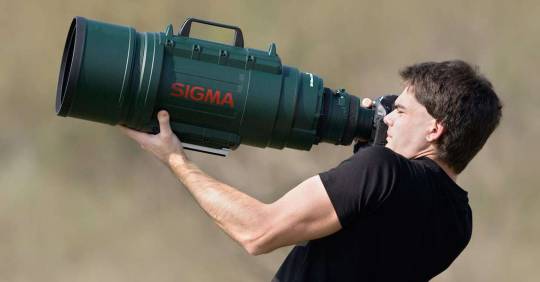
There is a formula for detail that never seems to be explained in any camera marketing.
Here is the simplified version...
Detail = Sensor x Lens
Let's say 1 is perfection. You have a sensor that performs at 0.5 and a lens that performs at 0.2.
The total detail will be 0.1.
But in the new model you increase the performance of the sensor to 0.8. WOW! That's so close to 1!
The total detail will be... 0.16.
Now let's imagine we've discovered a magic, physics-defying tiny plastic lens that performs at 0.8 as well.
The total detail jumps to 0.64!
But we all get sucked into a wormhole because we violated the laws of the universe.
Even if you were to design a near perfect (perfect is impossible) sensor that scores 0.99.
Without that magic plastic lens... 0.198
This is why I put Samsung's "200 megapixel" sensors in quotes. Because when paired with the same tiny plastic lens, there isn't much improvement. And that's why a 12 megapixel DSLR from 10 years ago with a giant honking lens can still capture more detail.
Most of the quality from smartphone cameras comes from the computational software processing. Phones actually take many photos at once and combine them to get you a decent image.

While that is still improving a little bit each generation, those improvements are stagnating as well. Until image processing can do a better job of inventing more detail realistically, smartphones are going to have to obey the laws of physics.
So... why are photographers saying the iPhone cameras are worse?
First, the ultra wide angle lens looks softer in low light.
And if you zoom between 1x and 5x, the images look less detailed.
But neither of those things make the cameras *worse*. In fact, the cameras are better for the most part. It's just that Apple decided to compromise on one aspect to improve another. Probably due to market research telling them most people prioritize certain things over others when taking photos.
They increased the resolution of the ultra wide angle sensor to match the detail of the main sensor, but that seems to have lowered the low light performance of the ultra wide. So in good light, you will see an improvement in sharpness. But they could not increase the sensor size to compensate and smaller pixels can have trouble with dim conditions. They probably discovered that people mostly use that lens in good light and they would appreciate the bump in detail more.
But pro photographers often photograph in more challenging lighting conditions because you can capture a more artistic shot. I don't think I could have gotten this shot on a smartphone.
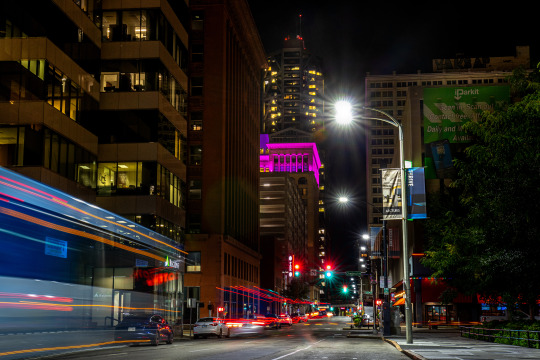
But photo normies are just taking pics of their kids doing weird kid shit.
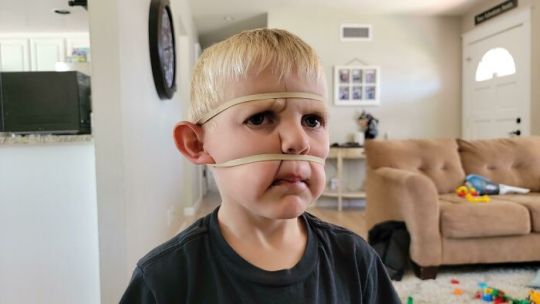
They aren't really trying to push the limits of their ultra wide angle lenses.
And they increased the zoom of the telephoto lens to 5x from 3x because most people never used the 3x. So images at 5x look great now, but unfortunately if you use anything between 1x and 5x, your image will be *digitally* zoomed. Which is never as good as optical zoom. They basically crop the photo, zoom in, and add sharpening.
So they prioritized people having longer reach and more zoom at the expense of that middle zoom range. Every camera system makes tradeoffs and compromises.
And I hate that I always feel like I am defending Apple, because they do have misleading and dishonest marketing regarding a lot of aspects of their tech. But hating on Apple gets more clicks so content creators also make misleading and dishonest claims.
And so we are just surrounded in a circle of hyperbole from all sides.
Now, if you know these limitations, you can change your approach to photographing stuff to keep them from being an issue. You can reap the benefits without dealing with the new compromises.
Here are some tips to help owners of the new iPhone, but also everyone else too.
Smartphone Photography Tips
Whenever possible, try to use the main 1x camera at only 1x zoom. This has the largest sensor with the most detail and works best in the lowest light. Only use the ultra wide or telephoto if you cannot get the photo otherwise. If you aren't sure you have enough light for ultra wide, take the photo, and then as a safety, take two photos with the main camera side by side and stitch them later with a pano app.
"Zoom with your feet" and don't use "in-between" zooms. Let's say your lenses do 0.5x, 1x, and 5x zoom. Even though you have the option to use other zooms, like 2x or 3x, that is going to compromise your picture quality. It is essentially going to crop your photo and enlarge it, which causes a loss of detail. If fact, if you use 4.5x instead of 5x, your picture will probably look like trash. You are always going to get better results if you can move closer or step back so that you are using the native focal length of your chosen lens. For example, let's say you are taking a photo and you judge the best framing to be at 4x. But you still have 10 feet of space behind you. If you back up and then zoom in to 5x, the phone will switch to that lens and you will get a much clearer picture.
Rule of thumb...
1 to 3x... try to move closer.
4 to 5x... try to move back.
If you hit a wall and end up at 4.5x, you might see if you have a panorama mode and try that instead. Switch to your 5x and do the pano. Or you can take two photos and then stitch them together with software later on. (Stitching panos with an app later will give better quality than pano mode, especially in low light.)
Low light needs stability. Get some sort of stabilizing device for low light photos. Either a phone case that lets you stand up the phone on its own or a mini tripod.
This thing folds to the size of a credit card.

Your phone will detect when it is stable and not being handheld. It will then automatically extend its shutter speed allowing it to drink in more light and give you a better picture.
Tripods are photography magic and will improve your low light photos quite a bit. Motion blur of moving subjects can still be an issue, but photos of a cityscape or landscape will look great.
For selfies, shoot a little bit wide and then crop in. This goes a little contrary to my earlier advice saying cropping lowers detail, but this is specifically for shooting a face. The 0.5x and 1x lenses on smartphone cameras are fairly wide angle. This can cause unflattering proportions with human faces. Wide angle lenses exaggerate distance. Near things look very near and far things look very far. To a wide angle lens, the tip of your nose looks like it is super close but your ears seem like they are a mile away. And that's why you may look a bit "alien" in your selfies.
People's natural instinct is to "fill the frame" with a face. The outer edges of a wide angle lens are more distorted than the very center. So try to keep faces away from the edges of the frame.
And one other trick you can do for selfies and pictures of faces is step back a few feet. Sometimes this is hard, especially with selfies, as your arm is only so long... but if you can take your face photos from just a little bit farther back, you will almost entirely eliminate unflattering distortion. In some cases, just stretching out your arm as far as it will go is enough.
Then you just crop the image with the framing you originally wanted, and your facial proportions will look great.
An example...
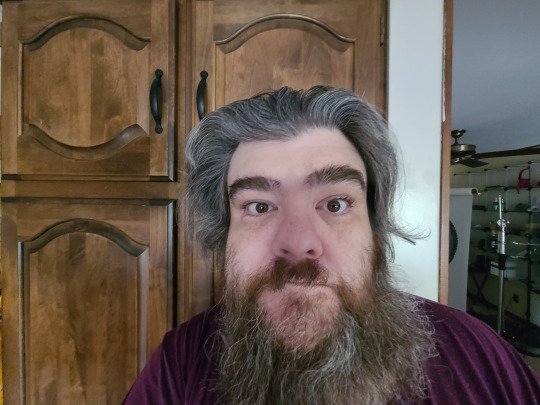
Here the distortion is bad because I am not in the center and the lens is too close to my face. The lens thinks my nose is really close and my ears are in Canada.
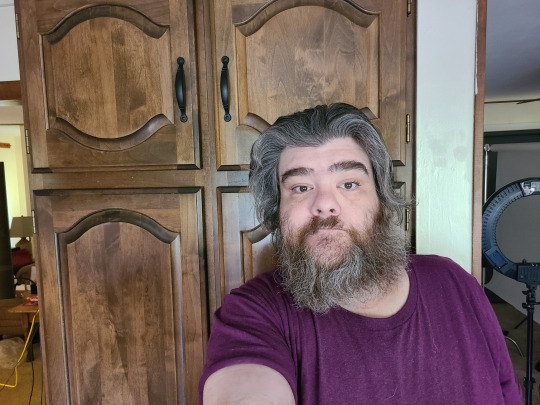
But when the lens is farther back the edge distortion is less prevalent and my nose and ears (relative to the lens) seem roughly the same distance away. So my proportions look great, but I don't quite have the framing I want.
But with a little cropping...


For social media there is still plenty of resolution to crop in. Cropping isn't bad, it's just always better to use it as a last resort or in a special circumstance like this. I get roughly the same framing as in my wide angle shot, but I don't look like I'm behind a door's peephole trying to sell you the Good News.
I wish they made a "mini" selfie stick that only extended a foot or so. With the main camera that is usually all people need to undo any wide angle issues. I have one of those mini tripods and that works well, but there is no activation button so I have to do a timer. Mirrors work great to help you get some selfie distance.
In any case, all cameras have limitations and compromises. Clickbait titles saying something is WORSE THAN THE OLD ONE are frustrating and wrong.
And people upgrading phones every year are silly. All current name brand smartphones have promised at least 5 years of software updates. I think Google and Samsung are offering 7 years on some models. And Apple has always just let you use your phone until it literally will not work with new software. Which has worked out to 8 years in some cases (with a battery swap).
Phones are now appliances. For now, hardware will improve 10 to 15% from generation to generation until physics breaks. So if you want a 50% improvement, wait 5 years and you'll think your new phone is awesome. If you upgrade every year, it is going to be difficult to see the change.
I hope to be starting a little course on smartphone photography in the near future. All modern phones are capable of taking amazing pictures. And as long as you understand their limitations you can mitigate or avoid them. And that is what I plan to teach.
#photography#bound by physics is right#lens size and sensor size are inherently tied to real life physics and there is a hard limit on how small you can make them#even if you continued to miniaturize everything else#your sensors and lenses are capped and cannot physically get smaller without sacrificing image quality#anyway part of the art is to pull things off even with substandard (phone) cameras#commentary#i wouldn't do an iphone tho lol. joke phone. 😂#more people need to understand zoom on phone cameras. if you're pinching in to 'zoom' you're probably failing#most of those are digital zooms which are the equivalent of cropping and enlarging the original image#it's a fake zoom and frankly they shouldn't exist#the only zoom you want is an optical zoom. it's not a zoom if it's not optical
700 notes
·
View notes
Text

Château de Vallery, France - the right part is from the 13th-century, the left part is the unfinished Renaissance enlargement from the 16th-century
French vintage postcard
#historic#photography#vintage#sepia#france#16th#century#enlargement#photo#13th#briefkaart#renaissance#the 16th-century#french#ansichtskarte#postcard#the 13th-century#right#postkarte#postkaart#carte postale#château de vallery#ephemera#vallery#left#postal#chteau#unfinished#tarjeta
8 notes
·
View notes
